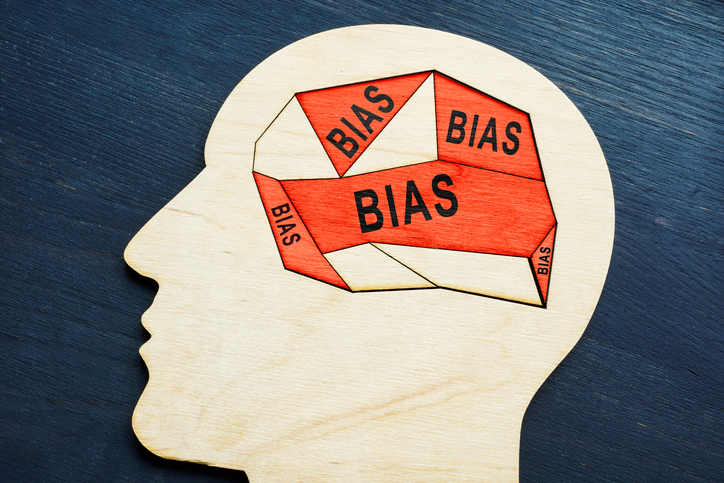Behavioral bias and segmentation
Editor’s note: Jack Miles is senior research director, Northstar Research, London.
Does your segmentation measure and understand behavioral biases? Understanding bias can assist in targeting and influencing specific behaviors. Doing this increases segmentation’s value vs. traditional segmentation approaches.
Why? Because traditional segmentations rely on rational measures and rational thinking. This limits their value. Because we – humans – are irrational.
You can incorporate behavioral biases into your segmentation by:
- Inventing meaningful measures – to understand behavioral biases.
- Interrogating demographic data – to link demographics to behavioral influences.
- Including credible changes – to understand and optimize segment stability.
Inventing meaningful measures
Context is critical.
Marketing activities often aren’t what influences human behavior. Influence is often created by the context these activities occur in. Psychologist Katarzyna Stawarz’s work supports this. Stawarz found that you can only create new behaviors with the right environmental context.
But what is context? Context in the, ahem, context of influencing buying behavior is the surroundings people make buying decisions in – how busy a shop is, the economic climate, the social norms, etc.
But often segmentation doesn’t measure these surroundings’ influence … even though this is critical in deciding if you should target a segment. For example, a segment may be risk averse. This means they’re unlikely to switch their buying habits, and thus not a practical segment to target for incremental sales.
Background boom or background bust?
Most segmentations measure income and spending potential. Understandable as this infers a segment’s commercial potential. All very rational.
But we view money differently depending on the era and environment we grew up in. Morgan Housel, author of “The Psychology of Money,” highlights this. Housel states that those born in times of economic booms view the value of £100 differently to those born in recessionary periods.
What does this mean for segmentation? It means you should measure your segment’s history. Because this affects how they view value today. And the more you know about their value perceptions, the more value you can create for them.
Personal or personalized?
Segmentation allows you to communicate specific messages to target segments. These message’s aim to influence your target segment’s behavior in your favor.
Technology allows you to personalize these messages. But how personal should your messages be? Personalization is capable of increasing revenue by 5% to 15%. But you need to get the personal/personalize balance right.
Your segmentation measures can help with this. But how? The obvious way is to measure personalization’s appeal. But that’s too rational. A better way is to measure openness to sharing data and concerns about data security.
This is because it’s the data economy that makes personalization possible. If a segment won’t share or worries about sharing data, targeting them will be challenging. Even worse, if you don’t know about this aversion a segment will view you negatively if you ask for their personal data.
Interrogating demographic data
Birth dates and brand signals.
Brands are behavioral shortcuts. Each brand communicates a signal. And this signal allows potential buyers to decide if they’ll buy it or not. Behavioral scientists call the shortcutting of decision-making heuristics. And your segmentation can understand which heuristics relate to specific segments by better interrogating age data.
Research from Tibor Besedeš, Cary Deck, Sudipta Sarangi and Mikhael Shor shows that older people are more comfortable with suboptimal decisions.
This is because older people rely on using how many positive attributes a choice has as a base for decision-making. This means that if you have an older segment, you need less communication to attract it vs. a younger segment. This is because young segments need more certainty to support their decisions.
Life events and winnable segments.
Breaking people’s buying habits is hard. But psychologist Wendy Wood found that we’re more likely to change habits after major life events. Such events include marriage, divorce or changing jobs.
Behavioral scientist Richard Shotton's recent work supports this. Shotton found that the chance of buying a new brand is 2.5-times higher among people who experienced a major life event in the last year.
Measuring your segment’s proximity to life events will find out how winnable they are (for competitor-dominant segments). Or how stable they are (for segments you own). You can then decide how much to invest in acquisition and retention.
Including credible change
The unchanging person.
A segmentation’s stability – i.e., how long it’s valid for – is typically a core criterion of its value. A segmentation that’s valid for five years is good. A segmentation that’s valid for five months is not.
Our biases as researchers are a critical factor here. We’re always seeking new news. Sameness is boring. Change is exciting. But there’s less change happening than we think. For example:
- TNS’ study into digital habits in 2010 listed core digital consumer needs as sociableness, efficiency and informative. Has that changed 12 years lager?
- Similarly, advertising agency BBH analyzed TGI attitudinal data to show that attitudes to authority, debt, future fears and gender haven’t changed for 20 years.
The seismic shifts.
This isn’t to say segmentations last forever. But it’s reasonable to suggest that the factors that will invalidate a segmentation won't be minor. It's more likely to be a seismic societal event or an Uber-level of category disruption.
You can’t measure reactions to all such events in a segmentation study. But you can measure the biases that govern reactions to them. Such measures include the value placed on social proof and your brand’s perceptions as a credible messenger. Knowing how your segments will react to large events will help you assess their long-term potential.
Stability vs. humility.
Once we start using segmentation data, we stop analyzing it. But to increase segmentation’s value that must change. Instead, by reanalyzing segmentation data every year we can improve the outputs.
You mean change our minds? Yes, that’s exactly what I mean. Am I aware this defies all research rational? Absolutely. But doing so is worthwhile … if we have the humility to accept, we can go back and do things better with fresh eyes and a year of extra learning behind us.
Adam Grant’s book “Think Again” highlights the benefit of using humility and re-evaluating your thinking. Grant cites a study that shows of 1,500 changed answers in an exam, one-fourth of went from right-to-wrong but half went from wrong-to-right. If this can work for exams, why can’t it work for segmentations?
Forecasting expert Phillip Tetlock’s work supports Grant’s work. Tetlock states refining our thinking is a super forecasting trait that allows us to predict the future. And who wouldn’t want a segmentation to be future proof? Especially as future proof creates the stability segmentations have historically craved.
Bias and segmentation
Biases are a core part of human behavior. Segmentation is a pivotal part of marketing. So, let’s ensure we combine the two in what we measure, how we analyze demographics and how we assess change. More influential and value creating segmentations will follow.
Of course, I’d say that though. I’m biased.

